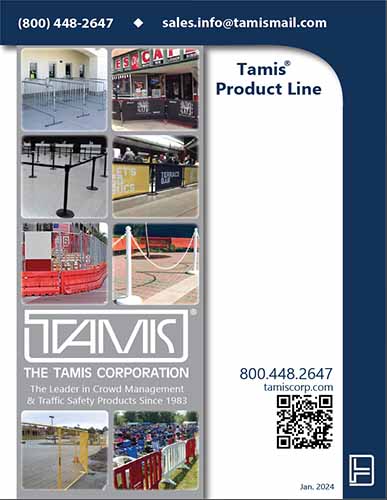Beware of Inferior Barriers Produced to Achieve Cost-Cutting
Last updated Monday, May 30th, 2022
Customers who choose crowd control barriers strictly on the basis of price often deal with suppliers that cut corners on quality. Purchasing lower-cost but lower-quality barriers can often have negative long-term consequences.
Experienced buyers of crowd control barricades know the difference between cheap knock-off barriers and high-quality products that meet the standards established for use at U.S. events and public facilities. But first-time customers can be misled by a product that looks good in a color photograph – one in which the quality deficiencies cannot be seen.
Some suppliers of crowd control barriers will change fabricators every few years in a continual effort to reduce costs and offer a cheaper barrier. Fabricators that cut corners on product quality will often get this business. The supplier will then theoretically pass the savings on to the end customer. But this supply-chain cost cutting frequently ends up costing the end customer extra money and effort long-term.
In a well-established market in which product quality standards have long been set, the introduction of a less expensive product should lead customers to raise questions. Why is a given supplier able to offer the same product at a lower cost? It is possible that a production process has been improved, but more often than not, the lower price is a result of shortcuts that have been taken behind the scenes.
In the case of steel crowd control barricades, lower costs could be achieved through the use of less raw material, the use of cheaper material, plus the reduction of labor costs due to less material (for example, fewer uprights per barrier). There can be as many as a dozen corners cut – individually each one may be minor, but in the aggregate, they compromise the overall design of the barrier.
For example:
* The use of thinner metal (with smaller wall thickness or smaller diameter tubing) can cause the barrier’s frame or uprights to bend upon repeated impact or pressure
* Thinner metal used for uprights, combined with simple spot welds of the uprights to the frame, will cause the uprights to eventually break loose
* The use of a single spot-weld to attach a base to the barrier frame makes breakage or rusting more likely after repeated use.
One of the primary cost-cutting practices is producing barriers which are not hot-dip galvanized.
For a quality barrier, the hot dip galvanizing process comprises about one-third of the total production cost. But the benefits greatly outweigh the expense, because hot dip galvanizing prevents corrosion and rusting and therefore significantly increases the barrier’s lifespan.
Some suppliers of low-cost barriers claim their product is galvanized, and they may be technically accurate. The barriers could be galvanized by zinc electroplating, or they could be “mill galvanized” (prior to fabrication) which will protect the outside of the steel, but not its inside. Hot dip galvanization is an expensive process, but it ensures that the product will last long-term, whether it is used in indoor or outdoor settings.
The Tamis Corporation, manufacturer and supplier of Blockader crowd control barriers, recently was in touch with a site that was looking for replacement bases for some of their barriers. When an attempt to affix new bases failed, it was discovered that the barriers were significantly rusted at the point where the bases would bolt onto the frames. The barriers were not hot-dip galvanized, and the site had purchased these barriers because of their lower costs.
Crowd control barriers are an investment. Reputable suppliers follow time-tested standards for design, alloys, and fabrication. When you are in the market to purchase barriers, weigh the value of any potential up-front cost-savings against the drawbacks of a lower quality product and its long-term replacement costs.



